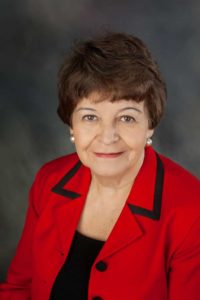 Progressive Voice is a weekly opinion column. The views and opinions expressed in the column are those of the individual authors and do not necessarily reflect the views of their organizations or ARLnow.com.
Progressive Voice is a weekly opinion column. The views and opinions expressed in the column are those of the individual authors and do not necessarily reflect the views of their organizations or ARLnow.com.
By Paul Friedman
Although it is a tragedy that remains fresh in our minds, this week will mark 10 years since the shootings at Virginia Tech that cost the lives of 32 people, physically injured at least 24 others and traumatized many more.
One day after the April 16, 2007, tragedy — having traveled back overnight from a trade mission to Japan, then-Gov. Tim Kaine (D) spoke movingly to the Virginia Tech community at the memorial convocation on campus:
“There are deep emotions that are called forth by a tragedy as significant as this; grieving and sadness by the boatload,” he said. “Anne and I have unashamedly shed tears about this and I know virtually all of you have as well.”
Kaine added that anger is a natural reaction. He observed that there is anger at the gunman and the circumstance.
Then he asked a fateful question: “What could have been done different?”
It was not long after he spoke these words that Kaine did figure out what could have been done. The shooter should not have been able to buy the two guns he was able to purchase.
Although the shooter had been found by a court to be a danger to himself, he wasn’t entered into the National Instant Criminal Background Check System because he was receiving outpatient – and not inpatient – mental health treatment.
After hearing from some of the family members and survivors of the shootings and consulting with Virginia’s Attorney General, Kaine issued an Executive Order to clarify when a report to NICS is required. At its next opportunity, with the support of the groups including the National Rifle Association, the Republican-dominated Virginia General Assembly supported his action with legislation.
Family members of those who were killed as well as survivors and their families continued their work and helped to pass a federal law providing funds to incentivize states to set up a system that would ensure their full participation in NICS. That would mean states submitting the names of every person found to be a danger to themselves or others and committed for treatment. Once entered, those people would be barred from being able to buy a gun from a licensed dealer.
Over the years since the Virginia Tech shootings, the Brady Campaign, the Education Fund to Stop Gun Violence, Everytown for Gun Safety and, notably, the NRA and the National Shootings Sports Foundation, have been working to achieve this goal and have been making progress.
As well, it’s a goal supported by our nation’s largest mental health organization, the National Alliance on Mental Illness (NAMI).
Yet the job is far from complete.
That’s why, in connection with the 10th commemoration of the worst mass murder on an American college campus, the Virginia Tech Victims Family Outreach Foundation – the independent non-profit formed by affected families and survivors of the Virginia Tech tragedy — is making this issue our top priority.
That’s also why we have decided to move to the forefront of the fight. After all, our story is the best known reason for why this must be done.
While Virginia is now an example of a state that has made progress, there are a number of others, including Maryland, Ohio, and Massachusetts for example, that could be doing far better or are not engaged at all.
Moreover, it is simply unknown right now how many states are submitting the names of people who have been ordered to get outpatient treatment, which constitute the bulk of commitments due to a lack of inpatient facilities.
Campaign 32, named for the 32 who were killed at Virginia Tech, will do the research and advocacy to get the job done. Together with people who want to join in this effort, we can make real, measurable and meaningful change. To make your voice heard, please donate $32 or more at www.campaign32.org!
Paul Friedman is a long time resident of Northern Virginia and is serving as the Executive Director of the VTV Family Outreach Foundation.














